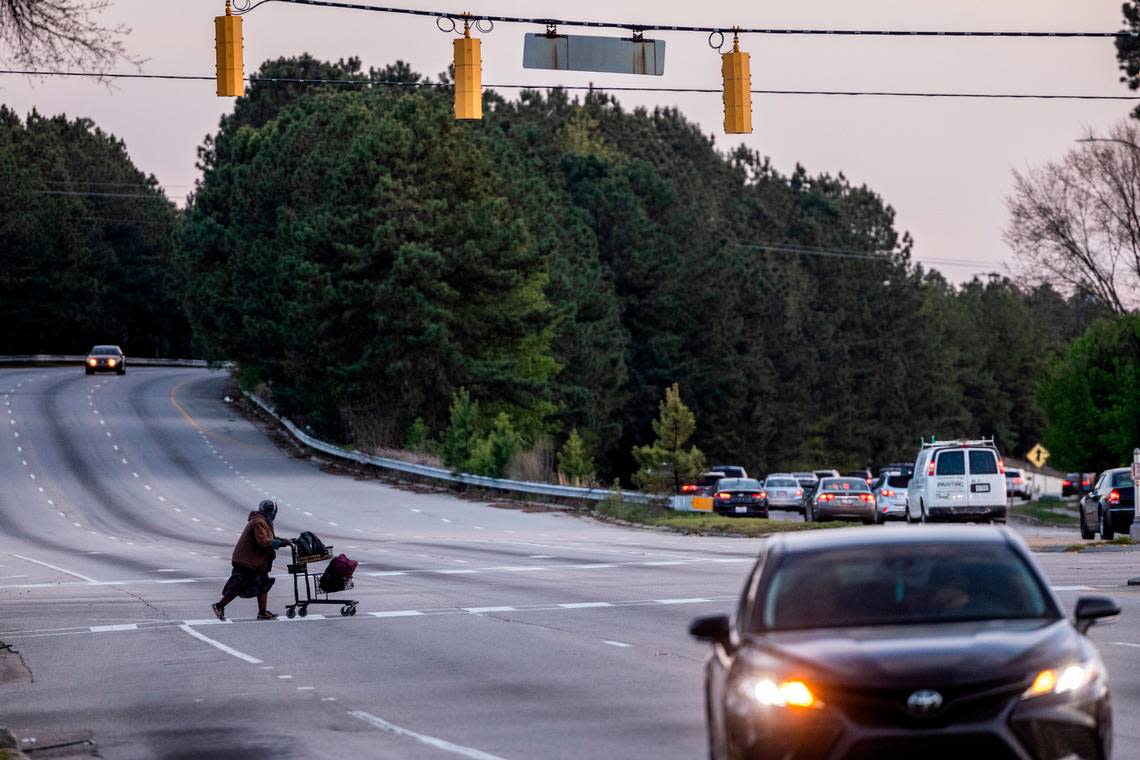Do pedestrians always have the right of way? Here’s what NC state law says

In the majority of the 29 pedestrian deaths in and around Raleigh last year, police or the State Highway Patrol chose not to cite the driver. In other words, something about the circumstances or the pedestrian’s behavior absolved the driver of legal responsibility, in the eyes of law enforcement.
So what does the law require of pedestrians and drivers as they interact on North Carolina streets and roads? Watch For Me NC, a program of the N.C. Department of Transportation, provides the following summary:
For drivers:
▪ Drivers must yield to pedestrians at marked crossings and unmarked crosswalks at intersections except where there is a traffic or pedestrian signal.
▪ Drivers must stop for pedestrians at stop signs and flashing red lights and must yield for pedestrians at flashing yellow lights.
▪ Drivers making right or left turns must allow pedestrians to cross first, unless pedestrians are prohibited from crossing. Pedestrians or bicyclists on sidewalks have the right of way, so drivers must let them pass before turning into or out of driveways and parking lots.
▪ State law prohibits drivers from passing vehicles stopped for pedestrians in crosswalks.
▪ Drivers must make sure the road is clear of pedestrians before pulling forward or backing up.
For pedestrians:
▪ Pedestrians have the right of way at marked crossings, meaning cars must yield to pedestrians.
▪ State law requires pedestrians to use marked crosswalks when they are provided, and it is unlawful to cross a street outside a marked crosswalk if the pedestrian is between two signalized intersections.
▪ When NOT at an intersection or marked crosswalk, pedestrians must yield the right of way to all vehicles.
▪ At crosswalks with pedestrian signals, state law requires that pedestrians obey the “Walk” and “Don’t Walk” signs in the same way a driver must obey red or green lights.
▪ State law requires pedestrians walking along the road to use sidewalks when available.
▪ When sidewalks are not available, pedestrians are to walk to the far left edge of the road facing traffic. Walking in this direction gives pedestrians the best view of traffic.
Additional safety tips for pedestrians and drivers
The N.C. Office of State Human Resources has put together some advice for avoiding car-pedestrian collisions.
For pedestrians:
▪ Be predictable. Follow the rules of the road and obey signs and signals.
▪ Walk or run on sidewalks whenever they are available.
▪ If there is no sidewalk, walk or run facing traffic and as far from traffic as possible.
▪ Keep alert at all times; don’t be distracted by electronic devices that take your eyes and ears off the road.
▪ Whenever possible, cross streets at crosswalks or intersections, where drivers expect pedestrians. Look for cars in all directions, including those turning left or right.
▪ If a crosswalk or intersection is not available, locate a well-lit area where you have the best view of traffic. Wait for a gap in traffic that allows enough time to cross safely; continue watching for traffic as you cross.
▪ Never assume a driver sees you. Make eye contact with drivers as they approach to make sure you are seen.
▪ Be visible at all times. Wear bright clothing during the day, and wear reflective materials or use a flashlight at night.
▪ Watch for cars entering or exiting driveways, or backing up in parking lots.
▪ Avoid alcohol and drugs when walking or running; they impair your abilities and your judgment.
For drivers:
▪ Look out for pedestrians everywhere, at all times. Their safety is your responsibility, too.
▪ Use extra caution when driving in hard-to-see conditions, such as nighttime or bad weather.
▪ Slow down and be prepared to stop when turning or otherwise entering a crosswalk.
▪ Yield to pedestrians in crosswalks and stop well back from the crosswalk to give other vehicles an opportunity to see the crossing pedestrians so they can stop, too.
▪ Never pass vehicles stopped at a crosswalk. There may be people crossing that you can’t see.
▪ Never drive under the influence of alcohol and/or drugs.
▪ Follow the speed limit, especially around people on the street.
▪ Follow slower speed limits in school zones and in neighborhoods where children are present.
▪ Be extra cautious when backing up — pedestrians can move into your path.


